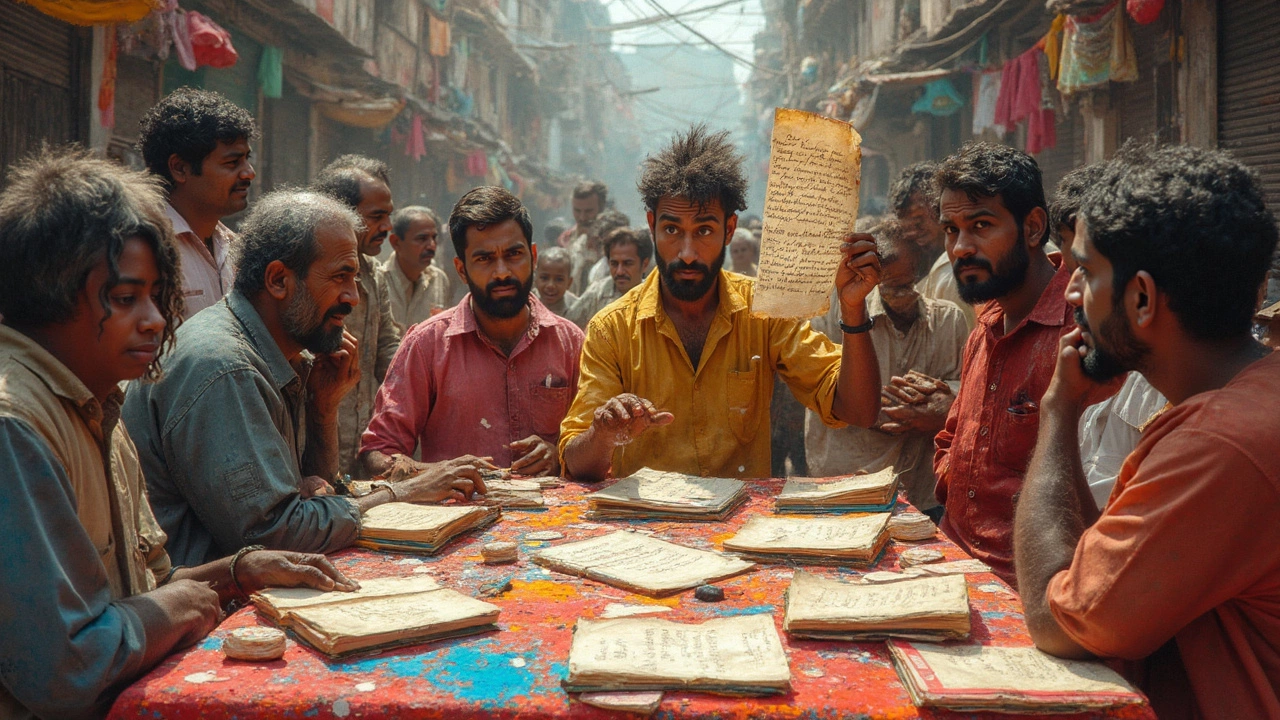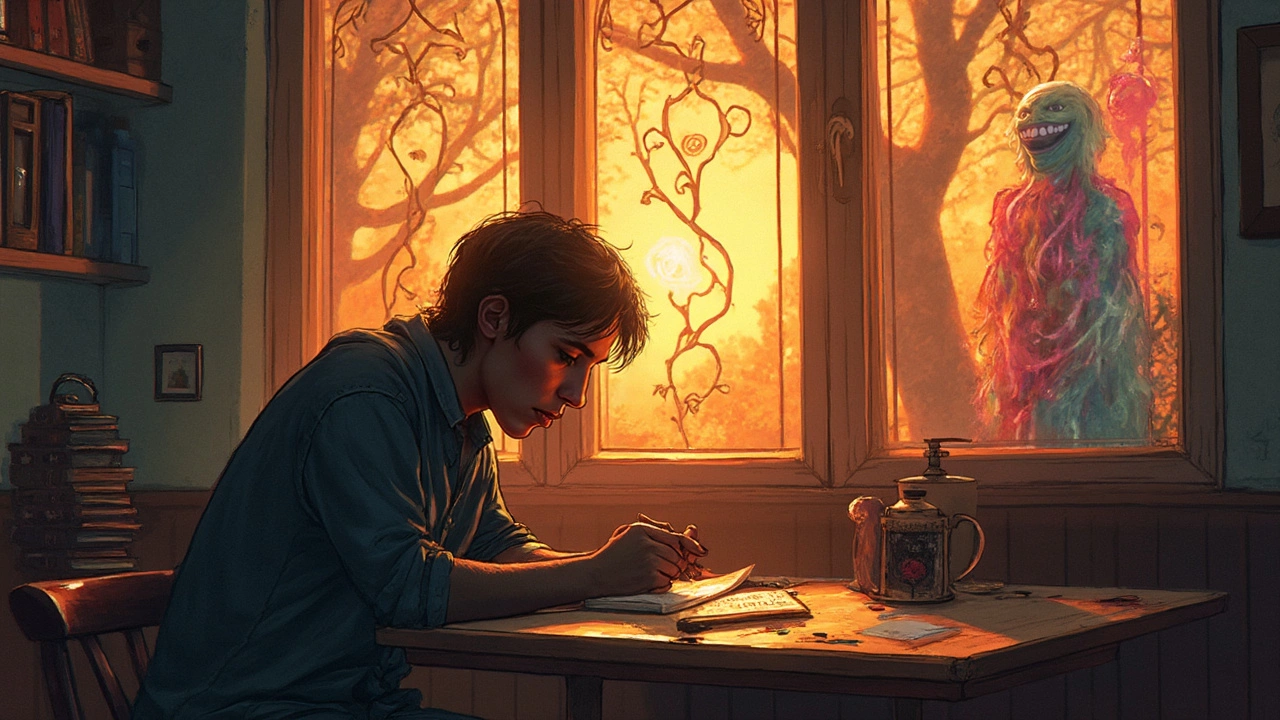
Ever heard the saying that poetry is an art that's judged harshly? It's especially true in the world of sad poetry. There's one name in Indian sad poetry that stands out for not-so-great reasons—Banmali. This poet was known not for his genius but for how often his verses were lost in mismatched rhythms and unintended hilarity.
Why do some poets get branded as bad? It's often a mix of personal taste and literary expectations. People feel an emotional tug when they read poetry, and when that tug turns into a push away, you end up with what many critics call 'bad poetry.'
But here's the kicker—sometimes, being a so-called bad poet isn't a disaster. It puts focus on what's different, even if it's in a negative light. Through Banmali's attempts, we see a brave embrace of imperfection, which teaches us more than polished verses ever could.
- Understanding Bad Poetry
- Who Was Kavi Banmali?
- Why Poetry Criticism is Subjective
- Famous Controversies in Indian Poetry
- The Odd Charm of Imperfection
- Lessons from the Infamous Poets
Understanding Bad Poetry
What makes a piece of poetry bad? Some say it's when words fail to evoke emotions, or when they seem out of place, throwing off the rhythm entirely. In the realm of sad poetry in India, this can mean a mismatch of tone and theme.
When Poetry Misses the Mark
Bad poetry can stem from inexperience or simply a poet's personal take that doesn't resonate with readers. Often, it includes forced rhymes or awkward phrasing that distracts rather than engages. Yet, it's worth noting that what one person considers 'bad' may just be misunderstood genius to another.
Examples of Notorious Works
Take the case of Banmali, an infamous poet known for attempting to infuse deep sorrow into his verses but somehow missing the emotional target. His lines were criticized for being overly simplistic and lacking the depth expected from sad poetry.
The Subjectivity of Poetry
Critics argue that poetry criticism is subjective. A poem that one person dismisses might be celebrated by another. This is especially true across cultures where language nuances and emotional expressions vary widely.
Poetry invites personal connections, and sometimes these connections don't form as intended. However, exploring what makes a poem bad can open discussions about cultural expectations and personal taste.
Lessons in Imperfection
While Banmali’s work might not fit the traditional idea of great poetry, it still serves a purpose. It teaches us to embrace differences and challenges our understanding of art itself. Who knew that being 'bad' could spark such interesting conversations?
Who Was Kavi Banmali?
Ah, Kavi Banmali—a name often whispered with a mix of amusement and criticism in the sad poetry circles of India. He seemed to resonate with audiences who could appreciate the rawness of emotion, even if it was a bit unrefined.
Clueless about who he really was? Banmali was a poet from the late 18th century known for his unconventional approach to poetry. You could say he was ahead of his time or maybe just misunderstood. While most poets were busy weaving intricate and polished stanzas, Banmali preferred to spill emotion straight onto the paper, structure be damned!
His works were often laden with deep and heavy themes, a characteristic of sad poetry. Yet, the execution, let's just say, sometimes left readers confused rather than moved. It was not uncommon for him to mix metaphors in ways that felt more whimsical than wise.
The Critique of Style
Some of his most frequent criticisms? A lack of form and focus. Those who appreciated neat couplets or consistent rhythm found Banmali's works a tough nut to crack. However, you could argue that his unpredictability gave Banmali a certain flair, like when a street musician plays slightly out of tune, but you still stop to listen.
The Cult Status
Despite—or perhaps because of—his reputation, Banmali attracted a sort of cult following. Readers and poets who championed authenticity often cited his work as a brave venture into the chaotic depths of human emotion. If nothing else, Banmali reminded us that poetry is, above all, an art form open to interpretation.
Why Poetry Criticism is Subjective
Poetry, by nature, is an art form that's deeply personal, which makes criticism all the more subjective. Everyone has their own tastes, experiences, and backgrounds, which influence how they perceive a piece of poetry. A poem that strikes a chord with one person might just be a jumble of words to another. This inconsistency makes it really hard to judge poetry with any objective standard.
Individual Tastes and Preferences
Let's be real: what one person considers beautiful, another might see as boring or even nonsensical. When it comes to poetry, this is even more pronounced. A poem's value often lies in its ability to connect emotionally with its reader. So, those feelings can be all over the place depending on who's reading it.
The Role of Cultural Context
Cultural background plays a big part in poetry appreciation. In India, vast linguistic and cultural differences mean what works in Hindi might not resonate the same way in Tamil or Bengali. Poems using specific regional imagery or language might not be impactful across culture lines, making criticism more complex.
The Influence of Era and Trends
Just like fashion, poetry follows trends. What was revolutionary in the Romantic era might seem stale today. Our modern understanding of what makes good poetry is influenced by current issues and sensibilities. Who's to say that a poem dismissed as bad today won't be celebrated in 50 years as a classic?
- Bad poets sometimes become cult favorites because they defy norms.
- Some poets intentionally break rules to challenge conventional thinking.
As subjective as it may be, poetry criticism gives us a chance to explore new perspectives and deepen our appreciation for the art, even if it means engaging with bad poets.

Famous Controversies in Indian Poetry
Indian poetry has not been without its fair share of debates, known for sparking heated conversations over interpretations and reputations. Some of these controversies have lingered over the years, showcasing the passionate discourse that accompanies this art form.
Mirza Ghalib's Untranslated Verses
One of the most famous controversies involves Mirza Ghalib, a legendary figure whose sad poetry continues to resonate. Critics often argue about the true meanings behind some of his more cryptic verses. The debate over translations versus original intent keeps language purists and literary enthusiasts at odds.
Kabir Das and the Question of Authorship
The iconic poetic works attributed to Kabir Das have faced scrutiny concerning authorship. Some historians argue that certain poems were written by disciples or followers, thus sparking a debate around authenticity. This potential dilution of the original voice takes center stage in many India focused poetry discussions.
Arun Kolatkar and the Marathi-English Divide
Another modern example is Arun Kolatkar, whose work spans both Marathi and English. Critics have questioned his choice of language, probing whether his English works dilute cultural authenticity. This controversy underscores the tension between embracing a global audience and staying true to local roots.
Statistics on Poetry Readership
Despite controversies, poetry remains an important cultural touchstone in India. Here's a snapshot of poetry consumption based on recent surveys:
| Year | Percentage of Population Engaging in Poetry |
|---|---|
| 2015 | 20% |
| 2020 | 30% |
| 2025 | 35% |
These statistics highlight a growing interest in poetry, regardless of the debates. They indicate that even if controversies exist, they often lead to a renewed interest and deeper engagement with the art.
The Odd Charm of Imperfection
So, what makes imperfect poetry oddly charming? It boils down to the very thing people initially hate—honest mistakes and faults in rhythm or rhyme bring authenticity. Banmali was a poet whose work was often criticized, but there was an honesty in his attempts, making way for genuine emotional expression, even if they stumbled here and there.
Embracing Flaws
Something magical happens when a poet embraces their flaws. It makes their work relatable. Nobody's perfect, and sometimes, readers see themselves in these raw lines. It's like comparing a rough unpolished gem to a well-cut diamond; sometimes, the natural beauty of the gem grabs more attention because it's real.
The Unique Voice
An imperfect poet often stands out because their work doesn't fit the typical mold. In a world where everyone aims for perfection, standing out might actually be better, and sad poetry in India sees its share of such poets. Their unique voices give us a fresh perspective on sadness, often making us question our understanding of beauty and success.
Lessons in Imperfection
Many infamous poets teach us critical lessons—imperfection isn't a flaw but a facet of creativity. You learn to accept yourself and find beauty in your unique expression. Plus, let’s be honest, imperfections often provoke more discussion than flawless artistry. They challenge the reader to think, understand, and even argue, keeping the conversation going.
In the end, embracing the charm of imperfection in poetry means welcoming new narratives, different styles, and unique voices that don't conform to the traditional. And isn't that what art, especially poetry, is all about?
Lessons from the Infamous Poets
Being labeled as a bad poet might sound like a writer's nightmare, but there's a lot more to learn from those who missed the mark. Let's break it down and see what insights these infamous poets offer.
Embracing Failure as Feedback
First off, what seems like a failure can be a stepping stone. Poets who received harsh criticism often took it as a cue to refine their craft, experiment with new styles, or confirm their unique voice despite the noise. Banmali embraced his identity and, instead of giving up, took it as a badge of honor, knowing that not everyone needs to write like the classics.
The Beauty of Imperfection
Sometimes, what we see as flaws create a style that's memorable. A famous example is how imperfect verses often capture the rawness and authenticity that polished poems may lack. Imperfection can attract an audience that appreciates the beauty in chaos. This opens a window to consider whose opinion truly matters when defining what makes poetry—and who its audience is.
Subjectivity in Poetry Criticism
Another lesson is understanding that poetry criticism is subjective. What one critic sees as abysmal, another might see as genius wrapped in imperfection. It's essential to remember that every piece of art—from poems to paintings—depends on the viewer's lens.
Finding Your Unique Voice
The most lasting takeaway is the importance of finding and sticking to your voice. Infamous poets often teach us that diverging from norms can be liberating. The boldness to be a different voice in a sea of similar styles speaks volumes.
Stirring Dialogue
What's fascinating is how these so-called bad poems often spark more conversation than safe, well-crafted ones. They challenge ideas and provoke reactions, fueling meaningful discussions about art and creativity.
In short, the honest takeaway from infamous poets isn't about losing yourself in accolades; it's about carving out your path and daring to be different, even if it means getting a few tomatoes thrown your way!